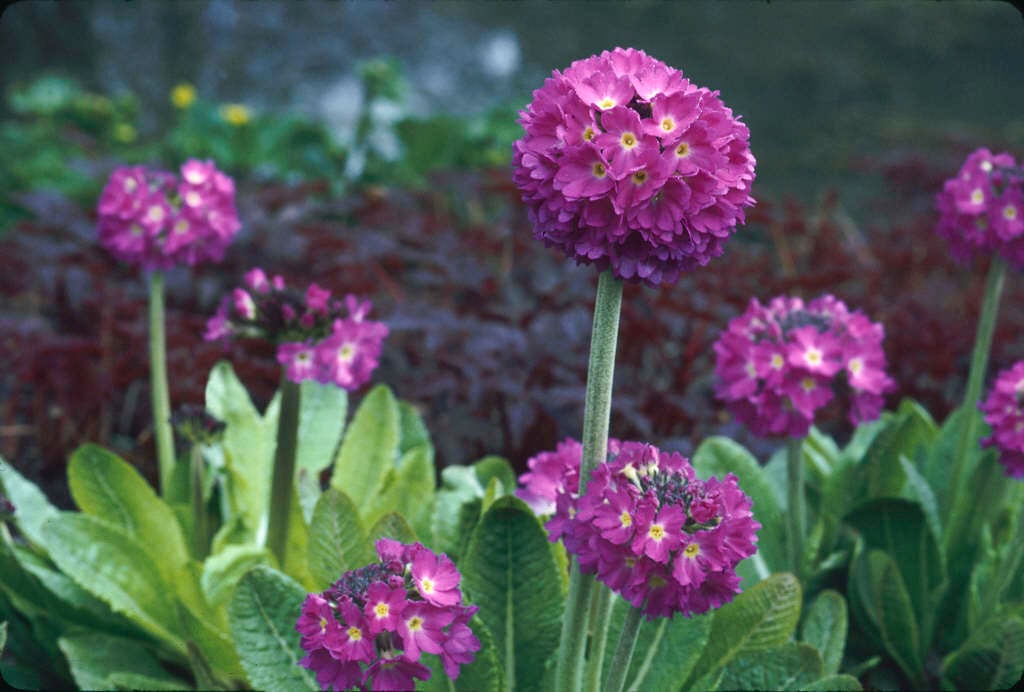Primula denticulata (De)
drumstick primula
An herbaceous perennial to 30cm, with green obovate leaves with a mealy coating beneath. Upright stems produce dense, rounded pom-pom like heads of pink, purple or white flowers with a yellow eye, from early spring through to summer
Size
Ultimate height
0.1–0.5 metresTime to ultimate height
2–5 yearsUltimate spread
0.1–0.5 metresGrowing conditions
Moisture
Moist but well–drained, Poorly–drained, Well–drainedpH
Acid, NeutralColour & scent
| Stem | Flower | Foliage | Fruit | |
| Spring | Purple White Pink | Green | ||
|---|---|---|---|---|
| Summer | Purple White Pink | Green | ||
| Autumn | ||||
| Winter |
Position
- Full sun
- Partial shade
Aspect
North–facing or West–facing or South–facing or East–facing
Exposure
Exposed or Sheltered Hardiness
H6Botanical details
- Family
- Primulaceae
- Native to GB / Ireland
- No
- Foliage
- Deciduous
- Habit
- Columnar upright
- Genus
Primula are herbaceous or semi-evergreen perennials, forming a basal rosette of simple leaves, with salver-shaped or bell-shaped flowers which may be solitary or carried in an umbel or in whorls on an erect stem
- Name status
Correct
- Plant range
- Asia
How to grow
Cultivation
Grow in deep moist or moist but well-drained neutral to acid, humus-rich soil in full sun or partial shade
Propagation
Propagate by division in early spring or propagate by seed sown from autumn to spring
Suggested planting locations and garden types
- Rock garden
- Cottage and informal garden
- Flower borders and beds
Pruning
Cut back after flowering
Pests
May be susceptible to aphids, vine weevil, slugs, leaf and bud eelworms and glasshouse red spider mite
Diseases
Generally disease-free
Love gardening
Sign up to receive regular gardening tips, inspiration, offers and more
View our Privacy Policy
Get involved
The Royal Horticultural Society is the UK’s leading gardening charity. We aim to enrich everyone’s life through plants, and make the UK a greener and more beautiful place.

